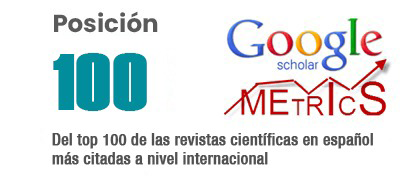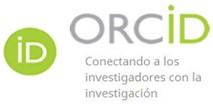Production of house fly larvae (Musca domestica L.) With different proportion of filter cake and hens manure
DOI:
https://doi.org/10.62452/rhwg2s44Keywords:
Food, temperature, treatment, weight, bacteriaAbstract
The effect of the production of fly larvae in different substrates at different heights was evaluated. For this, a completely randomized bifactorial design was established with the following factors: Factor 1 – quantity of substrate (filter cake and hens manure, %), Factor 2 - height of the substrate in magenta (three and five, cm). A- 100 filter cake; B- 25% hens manure + 75% filter cake; C- 50% hens manure + 50% filter cake; D- 75% hens manure + 25% filter cake; E- 100% hens manure at three centimeters in height and E, F, G, H, I with the same proportions of substrates at five centimeters in height. Each interaction was replicated three times. The corresponding statistical analyses were performed for P <0.05 to P <0.01. The proportions of substrates with their height do not influence the yield of fly larvae. Fly larvae develop between ambient temperatures of 12.50 oC and 30.40 oC with relative humidity between 42.0% and 75.0%. The highest yield of fly larvae was obtained with the highest proportions of chicken manure of 75% and 100%, influenced by the number of larvae. Salmonella spp were not found on the substrates neither E. coli.
Downloads
References
Aguilar-Rivera, N., Rodríguez Lagunes, D., & Castillo Morán, A. (2010). Azúcar,co-productos y sub-productos en la diversificación de la agroindustria de la caña de azúcar. Revista Virtual Pro, 106.
Cicková, H., Pastor, B., Kozánek, M., Martínez-Sánchez, A., Rojo, S., & Takác, P. (2012). Biodegradation of pig manure by the housefly, Musca domestica: a viable ecological strategy for pig manure management. PloS ONE, 7(3).
Cruz Weigert, S., Chim Figueiredo, M., Leobmann, D., Reis Nunes, J., & Garcia dos Santo, A. (2002). Influencia da Temperatura e do Tipo de Sustrato na Producao de Larvas de Musca Domestica Linnaeus, 1758 (Diptera, Mucidae). r. Brasileña de Zootecnia, 31(5).
Cuba. Oficina Nacional de Normalización. (2008). NC-ISO 7251. Microbiology of Food and Animal Feeding Stuffs-Horizontal — Method for the Detection of Salmonella spp — Reference Method (ISO 6579:2002, IDT). ONN.
Cuba. Oficina Nacional de Normalización. (2010). NC-ISO 4832. Microbiology of Food and Animal Feeding Stuffs-Horizontal — Horizontal Method for the enumeration of coliforms — Colony Count technique (ISO 4832:2006, IDT). ONN
Escolástico, C., Cabildo, M., & Claramunt, R. (2013). Organismos y poblaciones. Ecología I. UNED.
Floate, K., Lysyk, T., & Gibson, G. (2013). Haematobia irrintans L., Horn fly, Musca domestica L., House fly, and Stomoxys calcitrans (L.), stable fly (Dyptera: Muscidae). En, P. Mason, & D. Gillespie, Biological Control Programmes in Canada 2001 – 2012. (pp. 182-191). CABI.
Gállego, J. (2006). Manual de parasitología: morfología y biología de los parásitos de interés sanitario. Universidad de Barcelona.
García Nava, J. (1988). Actividad Entomopatógena de Bacillus thuringiensis sobre las diversas fases de la larva de Mosca Doméstica (Musca domestica. L). (Tesis de Maestría). Universidad de Colima.
Koné, N., Sylla, M., Nacambo, S., & Kenis, M. (2017). Production of house fly larvae for animal feed through natural oviposition. Journal of Insects as Food and Feed, 3(3), 177-186.
Márquez, D. (2003). Nuevas tendencias para el control de los parásitos de bovinos en Colombia. Una estrategia sostenible para el siglo XXI. CORPOICA.
Organización de las Naciones Unidas de la Alimentación y la Agricultura. (2018). The future of food and agriculture. Alternative pathways to 2050. FAO. http://www.fao.org/publications/fofa/en/
Pastor, B., Martínez-Sánchez, A., Stahls, G., & Rojo, S. (2014). Introducing improvements in the mass rearing of the housefly: biological, morphometric and genetic characterization of laboratory strains. Bulletin of Entomological Research, 104(4), 486-493.
Downloads
Published
Issue
Section
License
Copyright (c) 2021 Enrique Casanovas Cosío, Alexis Suárez del Villar Labastida, Nelson Valladares Enriquez, Dayani Quero Machado, Reyna Reyes Reyes (Autor/a)

This work is licensed under a Creative Commons Attribution-NonCommercial-ShareAlike 4.0 International License.
Authors who publish in Revista Metropolitana de Ciencias Aplicadas (REMCA), agree to the following terms:
1. Copyright
Authors retain unrestricted copyright to their work. Authors grant the journal the right of first publication. To this end, they assign the journal non-exclusive exploitation rights (reproduction, distribution, public communication, and transformation). Authors may enter into additional agreements for the non-exclusive distribution of the version of the work published in the journal, provided that acknowledgment of its initial publication in this journal is given.
© The authors.
2. License
The articles are published in the journal under the Creative Commons Attribution-NonCommercial-ShareAlike 4.0 International License (CC BY-NC-SA 4.0). The terms can be found at: https://creativecommons.org/licenses/by-nc-sa/4.0/deed.en
This license allows:
- Sharing: Copying and redistributing the material in any medium or format.
- Adapting: Remixing, transforming, and building upon the material.
Under the following terms:
- Attribution: You must give appropriate credit, provide a link to the license, and indicate if any changes were made. You may do this in any reasonable manner, but not in any way that suggests the licensor endorses or sponsors your use.
- NonCommercial: You may not use the material for commercial purposes.
- ShareAlike: If you remix, transform, or build upon the material, you must distribute your creation under the same license as the original work.
There are no additional restrictions. You may not apply legal terms or technological measures that legally restrict others from doing anything the license permits.




